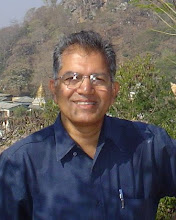The following is from the thesis of Francesco Marcoccio, SDB, of the ICC province, on Emmanuel Levinas. Fr Joan-Maria Vernet had mentioned something to the effect that Levinas, on being questioned about the Eucharist, had said that the entire Old Testament pointed to the Eucharist. The remark was made as an aside, off-record, during an interview. The incident had been narrated to Fr Vernet by Marcoccio, then working on his doctoral thesis on Levinas while residing at the Salesian house of Testaccio, Rome. This is what Marcoccio wrote back to me in an e-mail of 17 December 2011:
Levinas nel saggio "Un Dieu Homme?" giunge a formulare la tesi che l'Eucaristia è il modello dell'essere ostaggio per l'altro secondo la sua prospettiva. Ti allego una parte della mia tesi che rende ragione del percorso. Purtroppo non ritrovo la citazione esatta, se la troverò te la invio volentieri.
Here follows the extract from his thesis.
3.2. Creaturalità e umiltà
Dire Dio implica la riformulazione del senso della soggettività creaturale. L'uomo nel recupero della "situazione ontologica della creaturalità" si fa risposta responsabile. Nella prospettiva levinasiana la creazione, la separazione, la possibilità stessa di un'esistenza atea, l'idea di Infinito, rompono con l'autonomia superba e inglobante dell'Io che vuole sapere, comprendere e capire tutto e restituiscono all'uomo la giusta dimensione. Rivelare Dio non è più, per l'uomo, improgionarlo nelle sterili categorie onto-teo-logiche, ma rispondere "umilmente" a una convocazione etica radicata sulla chiamata all'essere. La creaturalità che istituisce la finitezza è insieme la porta d'accesso dell'infinito nel finito e all'infinito del finito; la creatura è il recinto dell'infinito che parla e insieme l'apertura, il luogo appropriato da cui si può accogliere l'infinito[1].
Lévinas afferma che la trascendenza è umiltà: già per Kierkegaard il motivo biblico dell'umiltà di Dio contiene l'idea che la trascendenza del Trascendente risiede nella persecuzione e nell'umiliazione legate alla sconfitta dove si manifesta come sua sollecitazione. L'umiltà, spogliata da ogni connotazione psicologica o morale, è una maniera originale di proximité dans le retrait, una modalità d'una apertura sottratta ad ogni presa di possesso, un modo di un Dio non contaminato dall'essere[2].
Il saggio Un Dieu Homme? offre preziose indicazioni sulla prossimità di Dio come umiltà. Lévinas alla luce dell'idea teologica dell'incarnazione si interroga sul valore filosofico di due problemi: l'umiliazione che si infligge l'Essere supremo, la discesa del Creatore al livello della creatura, l'assunzione nella Passività più passiva della passività e la modalità di produzione da parte di questa passività dell'idea di espiazione per gli altri (UDH, 69).
Queste due caratteristiche del divino mediate dalla tradizione ebraico-cristiana, che sono estranee alla filosofia di Platone, di Aristotele e di Hegel, sono valide dal punto di vista filosofico e rivelano l'ambiguità della trascendenza e il modo originale della presenza di Dio. Umiltà e povertà sono un modo (mé-ontologique) di rimanere nell'essere e non una condizione sociale (UDH, 70-71).
Lévinas, citando Is 57,15, afferma che Dio si umilia per abitare con il povero e l'oppresso; Egli è il Dio dello straniero, dell'orfano e della vedova, la sua traccia[3] si trova nel volto del prossimo, nel faccia a faccia. "Dire Dio" è praticare il diritto verso il povero e il misero, chi fa così può dire di conoscerlo veramente (Ger 22,16). La nozione di un Dio-uomo afferma in questa transustanziazione del Creatore in creatura, l'idea, filosoficamente rilevante, di sostituzione, la quale attacca il principio d'identità ed esprime il segreto della soggettività (UDH, 73-74). L'umiltà, modalità della trascendenza assume nella soggettività la caratteristica dell'ossessione, dell'accusa e della passività al di qua dell'identità. L'io è colui che è eletto per portare tutta la responsabilità del mondo e il messianismo è lo scompiglio dell'essere "perseverante nel suo essere" che comincia in me (UDH, 76).
"Dire Dio" in questo senso diviene esplicitamente "profezia", la dicibilità di Dio non è nient'altro che l'attestazione attraverso l'esperienza etica. E' il tema levinasiano della Kenosi di Dio. L'uomo ha anche la responsabilità di Dio, in forma più azzardata -afferma Baccarini- è la responsabilità di Dio. Alla parola Dio fa riscontro un ascolto esperienziale che facendosi domanda e invocazione porta al linguaggio tutta la ricchezza e l'inesuaribilità del messaggio[4].
[1]. Cf. E.BACCARINI, Dire "Tu"..., 166.
[2]. Cf. M. FAESSLER, L'intrigue du Tout-Autre. Dieu dans la pensée d'E. Lévinas, in "Etudes théol. et relig.", 4, 1980, 121; continua il nostro autore: "Par elle Il se signifie Autre-dans-le-Meme, autrement qu'etre, extravagance mé-ontologique bouleversant le présent de la coscience et l'ouvrant à une conjoncture de relation où elle ne pourra plus se derober".
[3]. Per Lévinas il concetto di traccia traduce filosoficamente il motivo biblico dell'umiltà di Dio. E' una sorta di pietra angolare: essa esige che la relazione tra il Creatore e la creatura non sia più pensato nei termini della correlazione alla luce dell'esperienza, ma come irrettitudine nello scompiglio di una significanza che non si sincronizza con il discorso che la comprende (M. FAESSLER, L'intrigue..., 121).
[4]. Cf. E. BACCARINI, Dire "Tu"...,168-169. Interessante anche quanto afferma più avanti: "nel nostro dire possiamo cogliere Dio come seconda persona solo nella dimensione ontologica della nostra creaturalità, cioè Egli è il nostro Tu come condizione di possibilità di dirci "Io". Egli è la condizione del nostro essere soggetti che ci rivolgiamo a Lui nell'invocazione. Si produce un movimento sintomatico dal parlare con gli uomini di Dio al parlare con Dio degli uomini. L'approccio dialogico si caratterizza così come percorso bidirezionale: da un lato il riconoscimento ontologico del Tu e la conseguente impossibilità dell'approccio "diretto" e dall'altro proprio l'irrettitudine di questo approccio rende necessario l'incontro con i tu nel contatto comunicativo, che tuttavia ormai non è più soltanto linguistico, ma operativamente etico" (Ibidem, 173).
